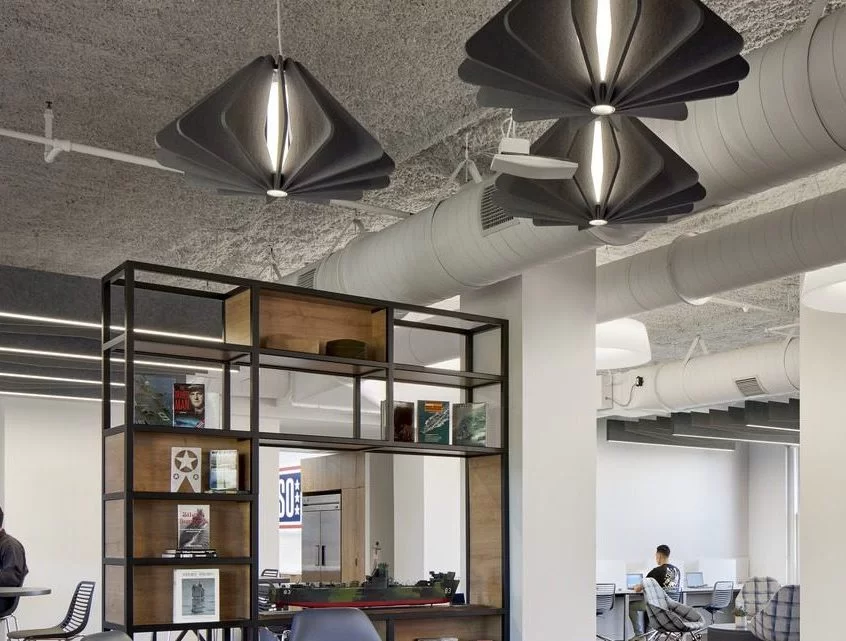
Successful cold-climate HVAC design depends on having the experience to know what items might cause problems or failures. This paper by IMEG’s Jeff Boldt and William Maki examines considerations for coils, pipes, and chillers, issues with snow, and occupant comfort. Reprinted with permission from ASHRAE, the paper is a follow-up to Designing HVAC for Humid vs. Arid Climates.

Optimizing the impacts of lighting and acoustics by merging their designs is becoming more refined as the approach matures in the built environment—providing a dynamic range of concepts not seen in the past. This paper provides benchmarks and definitions for acoustics as well as design considerations for integrated acoustic luminaires. A case study with four

This paper by IMEG’s Jeff Boldt and David Wright introduces how room functionality improves with improved architectural acoustics, especially in rooms used for collaboration, instruction, and assembly where clear speech is needed. Reprinted with permission from ASHRAE, the paper is a follow-up to a previously posted “Engineer’s Notebook” explaining basic acoustic terms.

Current architecture trends favoring open rooms, hard surfaces, expanded daylighting, and exposed HVAC ducts have made acoustics design more important than ever, but much of the regularly changing terminology surrounding acoustics can be confusing. This paper, written by IMEG’s Jeff Boldt and David Wright and reprinted with permission from ASHRAE, offers a simple vocabulary of basic acoustic terms that are almost always considered in any type of project.

This paper outlines innovative early warning strategies that combine a K-12 building’s new or existing security and lighting systems to function as a notification resource during an active assailant event or environmental emergency. The goal is to show how one cohesive platform can detect and identify various threats and communicate their locations, probable areas of safety, egress information, as well as other helpful directives.

The AEC industry will likely see new regulatory requirements that will greatly impact the planning and design of healthcare facilities to ensure they are prepared for future pandemics. This paper provides a starting point for this preparation by reviewing the lessons learned from COVID-19 and discussing design strategies that will provide the most flexibility for healthcare systems.

Designers must consider outside conditions during all seasons and their impact on the operation of the building and HVAC systems. This paper, co-written by IMEG’s Jeff Boldt, examines key design strategies for projects whether they are in climates that are humid or arid, hot or cold. Reprinted with permission from ASHRAE, this paper was originally published as the “Engineer’s Notebook” in the June 2021 issue of the ASHRAE Journal.

Owners of existing or planned medical office buildings may want to add features that can better prepare these non-acute care buildings for future patient surge events. This paper provides a high-level overview of key design considerations that will enable these buildings to be converted quickly and efficiently into an alternate care facility.

This paper provides an overview of current industry-standard HVAC design components and their effect on mitigating the transmission of airborne viruses. Component energy use and maintenance considerations also are discussed.

At some point every healthcare facility will face the need to modernize its Central Sterilization Services department. This paper provides the framework for conducting a thorough analysis of facility needs and characteristics when CSS modernization is being considered.












